195. At heliacal
Sirius (Te Pou, the Pillar) was day 181 counted
from January 1 and it meant a new halfyear
was about to begin.
... The Sothic cycle was based on what is
referred to in technical jargon as 'the
periodic return of the heliacal rising of
Sirius', which is the first appearance of
this star after a seasonal absence, rising
at dawn just ahead of the sun in the eastern
portion of the sky. In the case of Sirius
the interval between one such rising and the
next amounts to exactly 365.25 days -
a mathematically harmonious figure,
uncomplicated by further decimal points,
which is just twelve minutes longer than the
duration of the solar year ...
Therefore we ought to
keep an eye also on the stars close to the
Full Moon at the opposite side of this halfyear.
Assuming they were 183 (= 366 / 2) right ascension
days away we will find Nunki (σ Sagittarii) to be 183 days away
from Sirius - given that we are using the
Gregorian calendar according to how its days
were related to the stars at the time of the Pope:
 |
 |
 |
 |
 |
|
Cb4-3 (466 → 366 + 100) |
Cb4-4 |
Cb4-5 |
Cb4-6 (77) |
Cb4-7 |
|
te hakaua |
te henua |
te Rei |
te ua |
kiore - henua |
|
CLOSE TO THE FULL MOON
ON EASTER ISLAND: |
|
SIRIUS
= α Canis Majoris
(101.2), ψ5 Aurigae
(101.4), ν Gemini
(101.6), ψ6 Aurigae
(101.7)
|
τ Puppis (102.2), ψ7
Aurigae (102.4) |
Mash-mashu-sha-Risū-9
(Twins of the Shepherd)
ψ8 Aurigae (103.2),
ALHENA
= γ Gemini
(103.8), ψ9 Aurigae
(103.9) |
ADARA (Virgins) = ε
Canis Majoris
(104.8) |
ω Gemini
(105.4),
ALZIRR (The Button) = ξ
Gemini
(105.7),
MULIPHEIN (Oaths) = γ Canis
Majoris
(105.8),
MEKBUDA (Contracted) =
ζ Gemini
(105.9) |
|
Dec
29 (*101 + *182) |
30 (*284) |
31 |
Jan 1 (366) |
2 |
|
279 |
280 |
281 |
282 = 366 - 84 |
283 |
|
CORRESPONDING HELIACAL
DATES TOGETHER WITH THEIR
NAKSHATRA STARS: |
|
June 30 (*284 - *183) |
July 1 |
2 (183 = 365 - 182) |
3 (*104) |
4 (185) |
|
║June 26 |
27 (*98 = *102 - *4) |
28 |
29 (180 = 366 - 186) |
SIRIUS (181) |
|
'June 3 |
4 |
5 |
6 (157 = 184 - 27) |
7 (*78 = 185 - 107) |
|
"May 20 (140 = 181 - 41) |
21 |
22 |
23 |
24 (*64 = 185 - 121) |
|
APRIL 27 |
28 (182 - 64 = 118) |
29 |
30 (120 = 184 - 64) |
MAY 1 (*41 = *101 - *60) |
|
97 |
98 = 118 - 20 = 182 -
84 |
99 |
100 |
101 = 181 - 80 = 185
- 84 |
|
South Dipper-8 (Unicorn)
Φ Sagittarii
(284.0),
μ Cor. Austr. (284.6), η
Cor. Austr., θ Pavonis
(284.8) |
SHELIAK
(Tortoise) = β Lyrae,
ν Lyrae (285.1), ο
Draconis (285.5).
λ Pavonis (285.7)
ATLAS (27 Tauri) |
χ Oct. (286.0),
AIN AL RAMI
(Eye of the Archer) = ν
Sagittarii
(286.2), υ Draconis
(286.4), δ Lyrae (286.3),
κ Pavonis (286.5),
ALYA = θ Serpentis
(286.6) |
ξ Sagittarii (287.1), ω
Pavonis (287.3), ε
Aquilae, ε Cor. Austr.,
SULAPHAT
(Little Tortoise Shell) = γ Lyrae
(287.4), λ Lyrae
(287.7),
ASCELLA
(Armpit) = ζ Sagittarii,
BERED = i Aquilae (Ant.)
(287.9) |
Al Na'ām-18
(Ostriches) /
Uttara Ashadha-21
(Elephant tusk, small
bed)
NUNKI
= σ Sagittarii
(288.4), ζ Cor. Austr.
(288.5),
MANUBRIUM = ο Sagittarii
(288.8), ζ Aquilae
(288.9) |
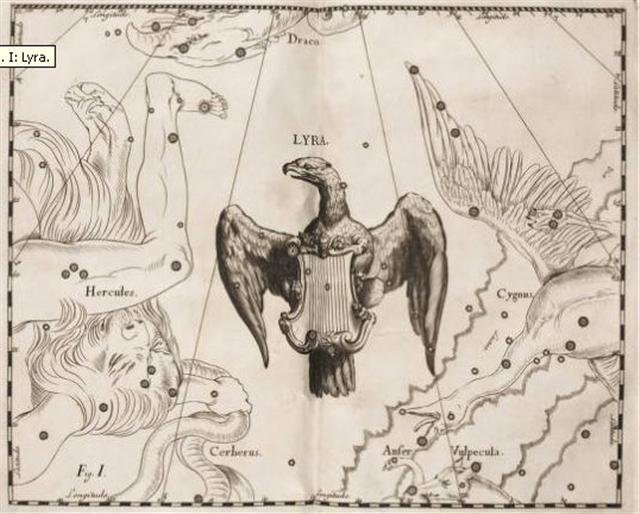 |
 |
 |
 |
 |
 |
|
Ga2-7 |
Ga2-8 (36) |
Ga2-9 |
Ga2-10 |
Ga2-11 |
|
... The most important
of all drums, he said,
was the armpit drum. The
Nummo made it. It
consists of two
hemispherical wooden
cups connected through
their centres by a
slender cylinder. It is
like an hour-glass with
a very long narrow neck.
With this instrument
tucked between his left
arm and armpit, the
drummer, by pressing on
the hollow structure of
thin wood, can tighten
or relax the tension on
the skins and so modify
the tone. 'The Nummo
made it. He made a
picture of it with his
fingers, as children do
today in games with
string.' Holding his
hands apart, he passed a
thread ten times round
each of the four
fingers, but not the
thumb. He thus had forty
loops on each hand,
making eighty threads in
all, which, he pointed
out, was also the number
of teeth of his jaws.
The palms of his hands
represented the
skins of the drum, and
thus to play on the drum
was, symbolically, to
play on the hands of the
Nummo. But what do they
represent? Cupping his
two hands behind his
ears, Ogotemmŕli
explained that the
spirit had no external
ears but only auditory
holes. 'His hands serve
for ears,' he said; 'to
enable him to hear he
always holds them on
each side of his head.
To tap the drum is to
tap the Nummo's palms,
to tap, that is, his
ears.' Holding before
him the web of threads
which represented a
weft, the Spirit with
his tongue interlaced
them with a kind of
endless chain made of a
thin strip of copper. He
coiled this in a spiral
of eighty turns, and
throughout the process
he spoke as he had done
when teaching the art of
weaving. But what he
said was new. It was the
third Word, which he was
revealing to men ...
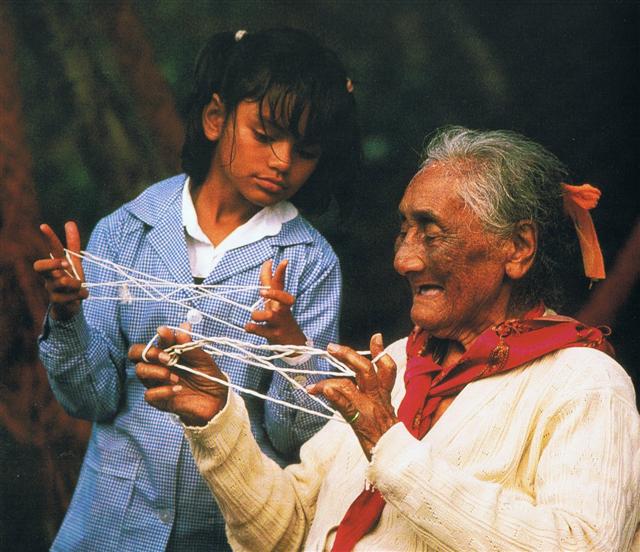 |
The position of Ga2-7
will then be after the culmination
at 21h of Gemma (α
Corona Borealis) in June 28 and
before the culmination at 21h of Atlas,
Alcyone, and Pleione in December
30. I.e., Ga2-7 should be at φ
in the South
Dipper - and at the other side
of the sky compared to the
Unicorn, the Monoceros
constellation:
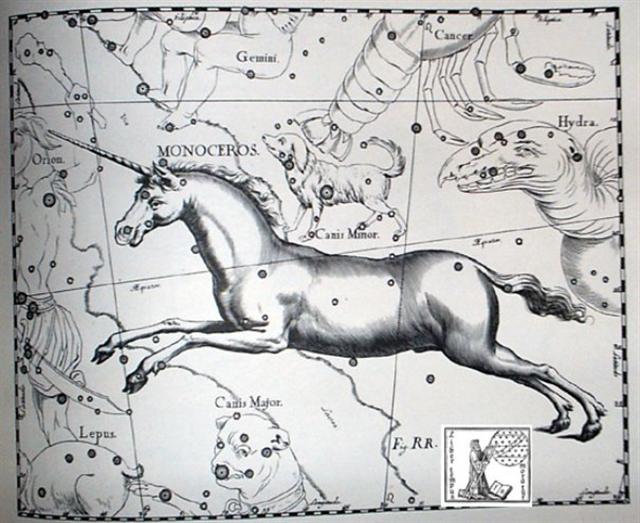
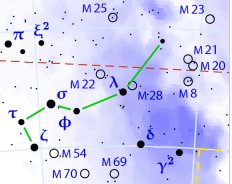
... In other words, the ancient
Druidic religion based on the
oak-cult will be swept away by
Christianity and the door - the
god Llyr - will languish
forgotten in the Castle of
Arianrhod, the Corona
Borealis. This helps us to
understand the relationship at
Rome of Janus and the White
Goddess Cardea who is ... the
Goddess of Hinges who came to
Rome from Alba Longa. She was
the hinge on which the year
swung - the ancient Latin, not
the
Etruscan year - and her
importance as such is recorded
in the Latin adjective
cardinalis - as we say in
English 'of cardinal importance
- which was also applied to the
four main winds; for winds were
considered as under the sole
direction of the Great Goddess
until Classical times ...
|
Egyptian bread, (-t,
female determinant) |
 |
Phoenician qoph |
 |
Greek
phi |
Φ(φ) |
|
...
is the 21st letter
of the Greek
alphabet ... Its
origin is uncertain
but it may be that
phi originated as
the letter qoppa ...
In traditional Greek
numerals, phi has a
value of 500 or
500000 ...
Isaac
Taylor, History
of the Alphabet:
Semitic Alphabets,
Part 1, 2003:
'The old
explanation, which
has again been
revived by HalÚvy,
is that it denotes
an 'ape,' the
character Q
being taken to
represent an ape
with its tail
hanging down. It may
also be referred to
a Talmudic root
which would signify
an 'aperture' of
some kind, as the
'eye of a needle,'
... Lenormant adopts
the more usual
explanation that the
word means a 'knot'
...
... The king,
wearing now a short,
stiff archaic
mantle, walks in a
grave and stately
manner to the
sanctuary of the
wolf-god Upwaut,
the 'Opener of the
Way', where he
anoints the sacred
standard and,
preceded by this,
marches to the
palace chapel, into
which he disappears.
A period of time
elapses during which
the pharaoh is no
longer manifest.

When he reappears he
is clothed as in the
Narmer palette,
wearing the kilt
with Hathor
belt and bull's tail
attatched. In his
right hand he holds
the flail scepter
and in his left,
instead of the usual
crook of the Good
Shepherd, an object
resembling a small
scroll, called the
Will, the House
Document, or Secret
of the Two Partners,
which he exhibits in
triumph, proclaiming
to all in attendance
that it was given
him by his dead
father Osiris,
in the presence of
the earth-god Geb.
'I have run', he
cries, 'holding the
Secret of the Two
Partners, the Will
that my father has
given me before
Geb. I have
passed through the
land and touched the
four sides of it. I
traverse it as I
desire.' ...
.jpg) |
In Cb3-22 there is an aperture
of some kind held up in front at
day 360. Another aperture is in
front of Nunki in Ga2-10, at the
Armpit (Latin Axilla) of
the Archer.

Ga2-7 could have referred to right ascension
day *280 at the time of the
Pope, which star position would
have been observed close to the Full
Moon in
║June 26 (day 354 / 2) in the
year AD
1582 (= 1842 - 260). And the 'broken
arm' at left could have
illustrated where anciently the
'Smith' had collided with Mother
Earth, either as defined from
the heliacal position of Sirius
at the time of rongorongo or
from the nakshatra postion of
the South Dipper at the time of
the Pope.
... During his descent the
ancestor still possessed the
quality of a water spirit, and
his body, though preserving its
human appearance, owing to its
being that of a regenerated man,
was equipped with four flexible
limbs like serpents after the
pattern of the arms of the Great
Nummo. The ground was rapidly
approaching. The ancestor was
still standing, his arms in
front of him and the hammer and
anvil hanging across his limbs.
The shock of his final impact on
the earth when he came to the
end of the rainbow, scattered in
a cloud of dust the animals,
vegetables and men disposed on
the steps. When calm was
restored, the smith was still on
the roof, standing erect facing
towards the north, his tools
still in the same position. But
in the shock of landing the
hammer and the anvil had broken
his arms and legs at the level
of elbows and knees, which he
did not have before. He thus
acquired the joints proper to
the new human form, which was to
spread
over
the earth and to devote itself
to toil ...
And the 'fishhook' in
Ga2-11 could have illustrated
how at the time of Gregory XIII
the Sun would have risen
together with Sirius in
║June 30:
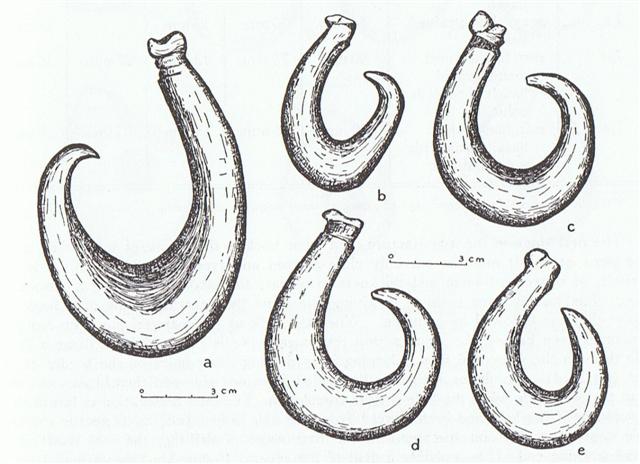
...
Thus was dry land fished up by
Maui, which had lain beneath the
sea ever since the great rains
that were sent by the Sky father
and the god of winds. The Maori
people say that the north island
of Aotearoa, which
certainly is shaped much like a
fish, is Te Ika a Maui;
and according to some tribes the
south island is the canoe from
which he caught it. And his hook
is the cape at Heretaunga
once known as Te matau a Maui,
Maui's Fishhook (Cape
Kidnappers). In some of the
other islands which lie across
the sea towards Hawaiki,
the people say that theirs is
the land that Maui pulled up
from below
...
|
Gregory XIII |
205 |
Julius Caesar |
|
MAY 1 (*41) |
NOV 23 |
24 (*248) |
 |
 |
 |
|
Ga2-11 (41) |
Gb1-18 (41 + 183 +
23) |
Gb1-19 (248) |
|
║June 30 (181)
heliacal SIRIUS |
'June 30 (364 - 183)
"June 16 (350 - 183) |
'July 1 (182)
17 (168 = 182 - 14) |
|
║Dec 30 (181 + 183)
NUNKI
(*288) |
'Dec 30 (364)
nakshatra SIRIUS |
31 (*285)
"Dec 17 (*271 = *285
- 14) |
|
... The fish came
near the surface
then, so that Maui's
line was slack for a
moment, and he
shouted to it not to
get tangled.
But then the fish
plunged down again,
all the way to the
bottom. And Maui had
to strain, and haul
away again. And at
the height of all
this excitement his
belt worked loose,
and his maro
fell off and he had
to kick it from his
feet.
He had to do the
rest with nothing
on.
[He was naked as a
newborn child.]
The brothers of Maui
sat trembling in the
middle of the canoe,
fearing for their
lives. For now the
water was frothing
and heaving, and
great hot bubbles
were coming up, and
steam, and Maui was
chanting the
incantation called
Hiki, which
makes heavy weights
light.
At length there
appeared beside them
the gable and
thatched roof of the
house of Tonganui,
and not only the
house, but a huge
piece of the land
attached to it. The
brothers wailed, and
beat their heads, as
they saw that Maui
had fished up land,
Te Ika a Maui,
the fish of Maui.
And there were
houses on it, and
fires burning, and
people going about
their daily tasks.
Then Maui hitched
his line round one
of the paddles laid
under a pair of
thwarts, and picked
up his maro,
and put it on again
...
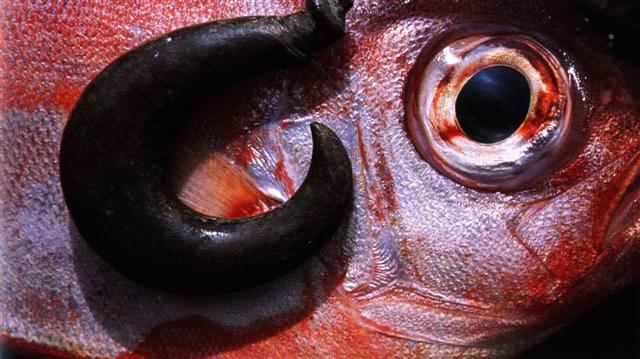 |
The detail of how the loincloth was
dropped (fell off) to be put on
again only after
the 'Fish' had been secured may
have referred to how the dates
of Maro (the dry month of
June) should be abandoned
(dropped), at
for instance heliacal Sirius because in the
Gregorian calendar
║June 30 came 4 days later.
 |
 |
 |
 |
 |
| Cb4-8 |
Cb4-9 (80) |
Cb4-10 (473) |
Cb4-11 (= Cb4-15 - 4) |
Cb4-12 |
| manu mau kai |
rere ki te kai |
ka kake ki te kai |
hakavari te gao o te manu (ausgestrichen: manu rere ki te hau tea) |
kiore henua |
|
Vari
1. Menstruation, period (also: tiko). 2. To tack, to veer (nautical); ku-vari-mai-ß te miro, the boat arrives, have veered [around Rano Kau]. Vanaga. About, circumference, to turn in a circle; hakavari, pliant, to bend, square; varivari, about, to go around; vavari, a garland; varikapau, circumference, to surround, a compass, to admire; hiriga varikapau, to go in a ring; pa varikapau, to close in; varitakataka (vari-taka 3) to surround. Churchill.
Pau.: Vari, marsh, mire, dirt. Ta.: vari, dirt, mud. Rar.: vari, mud. Churchill. Mgv.: Vari, paste well diluted. Mq.: vaivai, to dilute, to thin. Ha.: waliwali, soft, pasty. Churchill. |
|
... This [σ Sagittarii] has been identified with Nunki of the Euphratean Tablet of the Thirty Stars, the Star of the Proclamation of the Sea, this Sea being the quarter occupied by Aquarius, Capricornus, Delphinus, Pisces, and Pisces Australis. It is the same space in the sky that Aratos designated as Water ...

... 'I wan't a clean cup', interrupted the Hatter: 'let's all move [hop] one place on.' He moved as he spoke, and the Dormouse followed him: the March Hare moved into the Dormouse's place, and Alice rather unwillingly took the place of the March Hare. The Hatter was the only one who got any advantage from the change; and Alice was a good deal worse off than before, as the March Hare had just upsed the milk-jug into his plate [creating the Milky Way river] ...
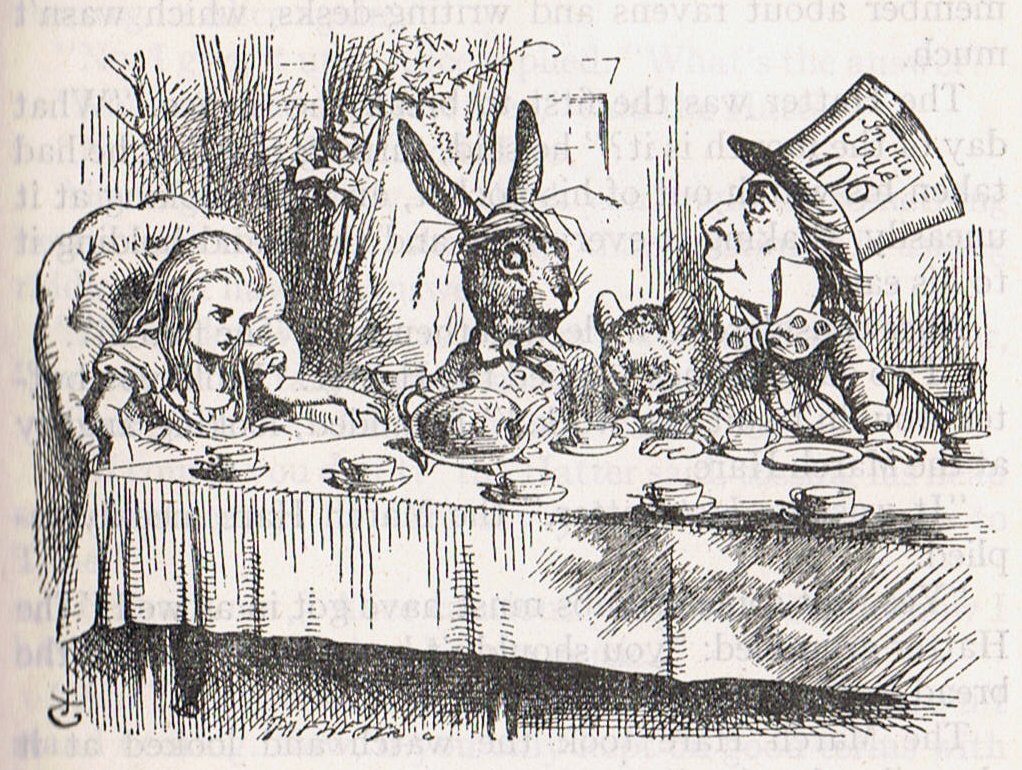
|
 |
 |
 |
 |
| Cb4-13
(→ 413 = 477 - 64) |
Cb4-14
(85 = 477 - 392) |
Cb4-15 |
Cb4-16 |
| manu pao i te hau tea
- kua tu |
manu rere ki te hau tea - kua tu |
manu
rere ki te hau tea |
kiore - henua |
 |
 |
 |
 |
| Cb4-17 (88 = 480 - 392) |
Cb4-18 |
Cb4-19 |
Cb4-20 (91 = 364 / 4) |
| erua marama |
tagata noho i to mea |
kua vaha |
|












.jpg)














